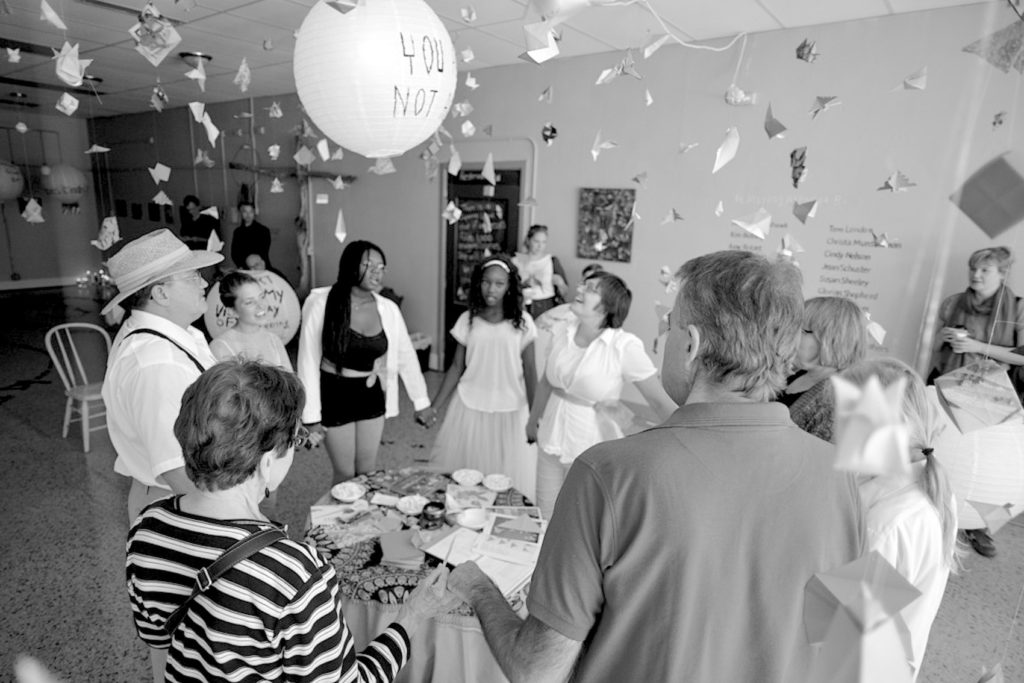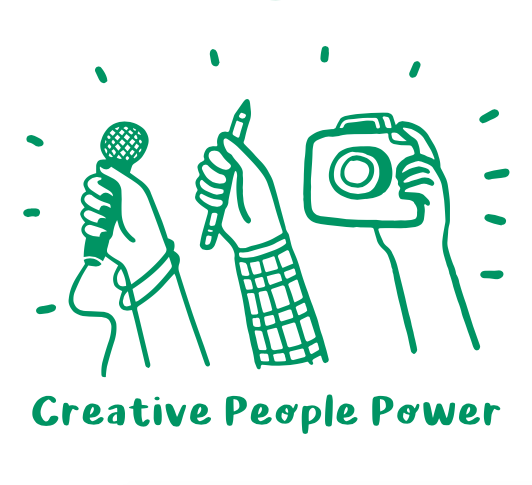Find Creative People Power on Creative Exchange
“I honestly feel so inspired by the work that these artists have created that represents a life, challenges the status quo, or brings in communities. I feel so incredibly lucky to have the opportunity to glance into the life and work that these artists are doing that directly shapes the cities and towns that they are working in, and creating new narratives that influence all who are a part of the work.”
In December of 2018, Springboard for the Arts launched Creative People Power, a report and framework produced with Helicon Collaborative. Creative People Power is about bringing together past models of creative and community development into a new, forward-looking, holistic whole. It’s an acknowledgement of the limitations of what’s worked in the past, and what we need to do to truly support creativity in our communities. There are guiding principles and ideals behind the work (more on that in the report) but also practical approaches for generating creative people power, with four key tactics that creative communities need: hubs and homes, support for making a living and life, artists and creativity at the table, and support for “lots of little.”
If you want inspiration for what these tactics look like in practice, we’ve taken the Creative Exchange archive of stories and special features, and created new tags for each example. These means our archive of 300+ stories is searchable by the kinds of creative examples that are already in practice all over the country.
- Hubs and homes—People need welcoming gathering places that enable civic and creative activity to be incubated and thrive. Click here for examples of hubs and homes!
- Support for making a living and a life—We need tools and supports that help artists, cultural workers and creative entrepreneurs start businesses, find employment, access health care and other services, and otherwise contribute to the community (including, but going beyond, support for discrete projects). Click here for ways to support for making a living and life!
- Artists and creativity at the table(s)—An appetite among civic leaders to use participatory processes and creative approaches to community change, including creating roles for local artists in civic decision-making and non-arts settings. Click here for artists and creativity at the table!
- Support for “lots of little”—Resources and supportive structures that enable people—artists and other community members—to put their creative ideas into action, in large and small ways, creating a “think it, do it” norm for community improvement. Click here for types of support for “lots of little!”
This project was made possible in partnership with the University of Minnesota Leadership program, and a team of students Halle Wassink, Larissa Milles, and Avery Birt. The quote at the top of the article is from Wassink, while Milles wrote about her experience, “Reading and learning about all different kinds of art and artists has been huge in widening my horizons and making me see art in everything!” With these new tags we hope you are as inspired.

If you’re interested in enhancing the creative people power in your community, a place to start is by asking yourself these questions:
- Hubs and homes:
- Where are the natural hubs and homes for creative civic activity in our community (both formal and informal)?
- Can we better encourage cross-pollination between creative and civic interests in these spaces?
- Living and a life:
- How can we help artists and other creative people make a living and a life, so they can stay in and contribute to our community?
- Are there supportive resources that currently exist for other community residents that could be easily adapted for artists?
- How can we expand opportunities for more people to express themselves creatively, no matter what they do for a living?
- Artists at the table:
- How might artists and / or creative processes help us engage more people in civic life, helping us imagine and implement better possibilities for our community?
- Are our planning and decision-making processes open to different ways of seeing and imagining solutions to our challenges?
- Lots of little:
- How can we provide incentives, or remove barriers, to enable people to quickly and easily put their creative ideas into action?
- Are there existing sources of support for arts or civic activity that might be made more flexible or inclusive?

